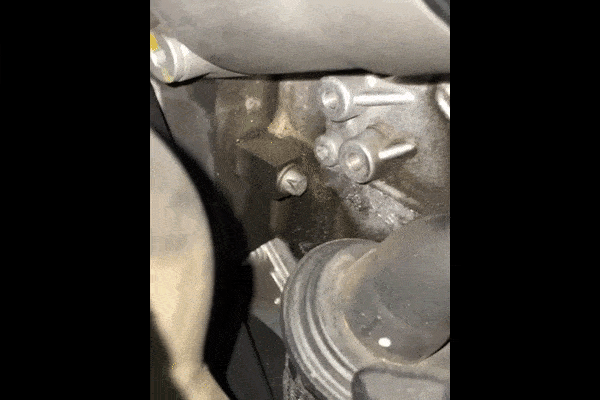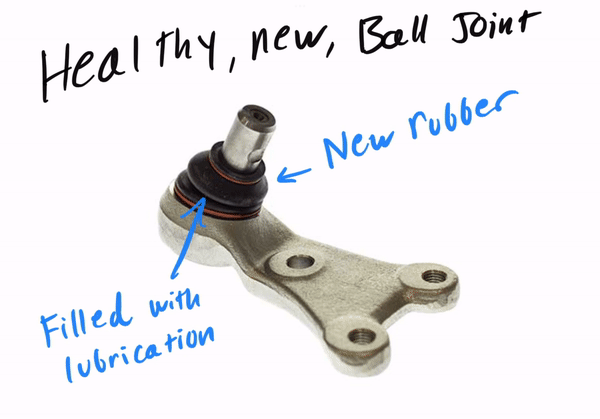
One trusted source for ALL your cars in LA.
On average Americans spend 10% of their time in their cars. We trust cars with our lives and the lives of our loved ones, yet most don’t understand how cars are modified or maintained.
There are estate managers, real estate agents, and financial planners: experts who handle the things we don’t understand – yet, we overlook having an expert to take care of our cars.
The purpose of vehicle management
A vehicle manager saves you time, money, and gives you peace of mind.
You hire a vehicle manager to discover everything that’s going on with your car. They figure out the issue, communicate their assessment, and find the best shops at the best prices.
Most importantly, they work independently of any auto shop, keeping their opinions unbiased. They’re focused on getting your car back with the work you requested done right the first time.
Overall, a vehicle manager is someone that you absolutely trust.
An auto Shop’s knowledge is their power.
The less you know about your car and rely on them, the more they can take advantage of you.
Don’t give away your power so easily.
Trust
Know that your cars are being taken care of by someone who is incentivized to have your best interest in mind.
What to expect from a vehicle manager
experts on cars
These are car people - they speak the language of all automotive shops and can vet them immediately. They’ve worked in shops, or the automotive industry and know it extremely well
One call solves it
Any questions or concerns about your cars: it’s one phone call. That’s it. No matter what. The car manager will know exactly what to do, and make a plan on how to solve it.
Never be ripped off again
Dealerships and auto shops are incentivized to take advantage of your lack of knowledge. With a car expert calling their Bull$&%T, that will never happen again.
Transparency
Every time a vehicle manager visits a shop, there will be updates on your car with photos, and a detailed summary of what they did, saw and directed to the shop on your behalf to make sure you always know what is going on at an executive level.
Project management so you don’t have to
Things get frequently left off the list or get pushed off until a later time. Not with a vehicle manager. If you want something done, you’ll get it done within your set timeframe.
Case Study
2016 Maybach S600
The surprise $14,153.28 service estimate
Remember: auto shops aren't your friends
Remember: auto shops aren't your friends
The owner of this Maybach brought it in for service. It needed a new rear wheel and somewhere in the car there was a loud squeak. Something needed to be diagnosed.
So the car manager found the right shop to bring it to, considering how special this car is, and got an email with the estimate.
Before car manager –
$14,513.28
After car manager –
$3,400
The video report
The tech showing the “oil leak” that was coming from the engine, that would “make the valves go bad” if we didn’t replace them.
A $3,750 part of the bill which was avoided
After reviewing the estimate, the vehicle manager called the owner to discuss it. He was furious. Half of the items on the list had already been taken care of during the car’s warranty, and he had bills for all of the work done.
On top of this, this actual shop was the one that did the final pass on the warranty work on the car and didn’t flag some of these major ticket items on the estimate to be replaced.
The vehicle manager gave a call to the service advisor that was working on the car.
The service advisor had indicated that the shop had no record of the car being there, and that everything he wrote in the estimate was true to what his technician had told him about.
When asked about one issue regarding a leaking valve cover gasket, a line item that would be around $3,400, the service advisor said that it was leaking and that if we didn’t replace it the valves would “go bad.”
When asked what evidence he had that a leaking valve cover gasket would cause the valves to go bad, he simply said that this is what his technician told him.
Red flag. A call was needed to the service manager.
With the service manager on the line, it was noted that the owner had all of the documentation from the previous work that was done, and questioning why the estimate was the way that it was.
The manager responded by saying he saw the discrepancies and that he would talk to the service advisor about this and call back.
About an hour later he called to apologize and explained that they had adjusted the bill as necessary. The car for sure needed control arms and new belts (verified separately) but all of the other items were taken out.
The $14,513.28 bill fell to $3,400, saving the owner $11,113.28.
Needless to say the owner was very happy with this outcome and got his car back on the road without being taken advantage of.
5 tips –
How to vet the next auto shop you go to
-
By learning the ins and outs of one component of your car, you would be able to tell if someone is being truthful with you or not. Take for example your alternator. If you learned everything to know about your alternator: how it functions, how it’s installed, how it fails, the most common ways of failure, how many miles it typically fails at, etc. you would then be extremely knowledgeable on that one part.
If you then went to 3 shops in your area and asked them about what was going on with the alternator on your car, and then pretended not to know anything about it, you could see who is being honest and who isn’t. You could then make a more educated decision about who you could trust with your car.
-
Bring your car to a shop to have it checked. Tell them you need to think about the work, take your car and leave. Think about the interaction and ask yourself the following questions -
- Did the advisor that helped me treat me as an equal or talk down to me?
- When they explained the estimate to me and I had questions, did they actually answer those questions or divert from them? Were there any follow-ups to the estimate? If so, were they time-pressing? Do I know what they’re trying to actually charge me for and why?
- Do I feel comfortable with this person or the mechanic they’re representing? Actually feel this out. If you don’t for some reason, think about why.
These are hard questions to ask but worthwhile because they’ll lead you in the right direction of whether or not you’re getting taken advantage of.
-
Google and Yelp reviews, while great for some businesses, are a shot in the dark for what you will get in an automotive garage. Read the 2-star reviews of a business to really find out what’s going on, and google what the person is saying in the review to see if this is accurate or not for that particular car.
Beyond that, these types of reviews could lead you in the wrong direction because of the simple fact of having no idea who is behind the keyboard when reading their review. You have no idea what knowledge of cars they have to highly recommend a shop and also don’t know what insight they have into that particular shop’s day-to-day practices.
-
This is probably the most common fault of the auto industry. The service advisor is someone who is assigned any car that comes in and is typically overloaded with work, underpaid, juggling multiple customers all at the same time, and as a result, the attention to detail naturally falls off.
Half the time the mechanic working and communicating with you through their website or app doesn’t care at all about your car, and is just trying to make as much money as possible off of each and every job. They have an idea how much money you have to make to own your specific car and will cut corners to make sure they get paid as much as possible for as little work as possible.
-
This test is similar to watching how people treat waiters at restaurants or how they treat people beneath them in the hierarchy. Go by on a Saturday, talk to people, and ask questions about the shop, the history, and about the people working there.
See how people interact with each other, who the managers are, and how they talk to their people. Talk to other customers waiting for their car and their experiences so far. You’ll quickly see the vibe of the place, and assess if this vibe is where you want to take your car. This is time-consuming but worth it.
Auto shops aren't your friends
❤️
Auto shops aren't your friends ❤️
Case Study
2022 Hummer EV
From modification to repairs
As soon as the owner of this white 2022 Hummer EV took delivery of it he wanted to change its color. He took inspiration from the original Hummer H1 he saw in a film and wanted to make as close of a replica as he could to that truck he saw.
Fitted with a full vinyl wrap, custom Forgiato wheels with off-road tires, and tinted windows, this was one of the first Hummers in the US to receive such a custom treatment. In record time mind you. The turnaround was about 3 weeks to get it ready for a video shoot.
The truck.
The inspiration.
The result.
During the shoot, the owner and some friends stood on the hood of the truck, denting it, and it needed to be repaired. The owner also hit a massive pothole, and afterward, the car started to steer to the left while trying to drive straight.
The truck was brought to a highly-rated shop in Los Angeles to diagnose the situation. The shop determined that one of the custom wheels was bent on the truck, and said that would fix the truck pulling left. The wheel was in fact bent, but the vehicle manager did his initial check on the truck as per usual to take a look at what else might be going on.
When the damage happened
Damage done during shoot
In-repair
Paint and alignment
Repairs complete
The vehicle manager did a detailed look around the car and underneath it. What he found was not just a bent wheel, but also a bent tie rod, which the shop missed. A tie rod is what steers the car, and if this failed while driving, well, this could have been very dangerous for the owner.
Once this was spotted a new one was ordered, installed, and then tried to be aligned by 5 different alignment shops. The vehicle manager had to call GM corporate and get the alignment specs as every dealer in LA and every alignment shop he tried didn’t have the correct specs to align the truck. It was so new that GM hadn’t sent them out yet.
Once the alignment shop had these specs, they dialed in the truck’s suspension and the owner was back on the road.
3 things to avoid when going to a shop
-
This is the easiest way to get taken advantage of. The problems here are the following -
1. A single source of truth: whatever the shop tells you, you opt to believe as true and since you’re already there, they usually offer you some “deal” to get the business and do the job without you having to spend any more time or stress trying to figure it out on your own. This is step 1 to get taken advantage of.
2. Their diagnosis could be misleading or flat-out wrong in order to make more money or are extremely smooth talkers to get you to believe they can fix whatever it is.
3. Their diagnosis is correct, but they cut corners to do it quicker, and still charge you the full amount of time for the job OR they will take well beyond what they said to fix your car to make it seem like they appear to have more business at their shop than they actually do. Why would they do that? To try and get more business.
Shops know these practices and many perform tricks like this to take advantage of unsuspecting and unknowledgeable customers.
-
When going to a shop, especially a dealer, it’s vital to know exactly what has been serviced or done to your car, and when. This is an easy tactic that is used to upsell you on things that might be “worn” when really, you had it replaced 6 months ago.
An example of this: a client had their Maybach brought in for service. A wheel needed to be replaced and a squeak in the suspension needed to be diagnosed. What the shop came back with was a $14k bill requiring well beyond what he requested. What’s more is that 1/2 of the work had already been done before by the same shop, 6 months ago under warranty. A typical case of shop’s trying to take advantage.
If you don’t know what’s been done in the past, and or want to know what you’ll need to replace in 6-12 months’ time, go to a brand-specific independent shop and ask them for a “pre-purchase inspection.” Tell them that you’re going to sell the car and that you want to give the buyer a list of what they’ll expect when buying this car. This way they won’t try to gain additional business to do the work on your car at the same time.
This will cost around $150-200 but will save you a ton of money down the road as you’re paying the shop for their knowledge, and not for them to work on your car. Ask for a detailed list of what they found, and use this as your base knowledge the next time you bring your car in for service to know exactly what you want to have done.
-
A dealership, a repair shop, and everything in between in the auto industry make money off of your blind trust, and not knowing about your car. No matter how nice they are, or how friendly, they will still upsell you on parts or services you might not need. Just like the old tail of the snake biting the frog, this is just in their nature.
How to fight this: educate yourself to become an expert on the specific job or hire someone who is to handle it on your behalf.
Auto shops aren't your friends
❤️
Auto shops aren't your friends ❤️
Case Study
1987 Mercedes 300td s124 Wagon
bringing it to life and catching mistakes from a highly-rated shop
Getting the mechanical work taken care of first…
This 1987 Mercedes 300TD S124 was in need of mechanical service. It had just ripped up the passenger side fender on a pothole while the owner was driving it, and the suspension was going to need attention considering it was originally from 1987. The car was brought to a highly rated, 4.8 star (with hundreds of reviews) Mercedes shop in Los Angeles.
The shop was told to do a pre-purchase inspection on the car: meaning to look over the car and do a thorough look at what the car is going to need for the next year of operation, and to be on the lookout for anything eye-catching as the owner wants to stay on top of any preventative maintenance.
The truth was far from what WAS communicated.
The shop flagged that a tie rod was worn and needed replacement, and the shocks/springs would need to be changed. When asked about why not doing both tie rods, the shop suggested that the other was fine. The vehicle manager became suspicious and asked to see underneath the car to confirm this. The shop declined for him to look on the basis of insurance, and that he should believe what they were saying. The work was completed and given back to the vehicle manager.
Once the car left that Mercedes shop, the vehicle manager took it to another shop and used their lift to double-check what was going on. What he found shocked him. Not only was the other tie rod bad, but the control arm bushings had failed, all of the rear suspension bushings had failed, the differential bushings had failed, and worst of all, the ball joints rubber seal was ripped, leaving the internals bone dry, rusted, and were ready to create a severe accident.
This is what they should look like
Easy to understand terms –
A ball joint - your hip joints in your body are ball joints, which allow you to move your legs. On cars, these joints are sealed with rubber packed with lubricant - allowing you to turn, allowing your suspension to handle bumps in the road, and ultimately allowing you to control your car safely.
Suspension bushings - little rubber cushions that are a buffer for metal suspension components, ultimately keeping your car safe, smooth, and quiet.
Tie rods - want turn your steering wheel to the right? The tie rods turn your wheels to the right through a mechanism called a steering rack.
What happens when a ball joint fails?
With that said, all of these components were beyond their safe levels of operation. The ball joints on this Mercedes were so dangerous, that at any given pothole, hard turn, or bump in the road, it could have popped out of its socket. This would highly likely cause a severe accident for the driver and whatever was unfortunate enough to be around him.
Luckily the vehicle manager did their job, and this would have been a dangerous situation for the owner turned out to be fixed immediately.
Once this mechanical work was dialed in, it was time to begin on the fun part of the project.
This car had just been resprayed grey, but unfortunately, the respray didn’t come out as the owner expected. So the owner wanted it to be vinyl-wrapped in silver and then add 33 different reflective vinyl decals. Reflective meaning, when light hits it, they illuminate.
The Artwork
sizing the artwork for print
This included hours of work between sizing, checking the resolution, sending drafts to the print shop, and making sure that they all checked out perfectly before being printed on the extremely expensive reflective vinyl material.
Before doing so, a full draft of the sized artwork was printed in black and white, on normal paper in order to see how everything would fit.
The artwork was beautifully designed by a designer, however, it was not to scale for the vehicle. So the vehicle manager went in and had to size each of the 33 decals, sometimes having to create new pieces to make sure that they were going to be to size in the right resolution.
PAper draft sizing
More sizing, placement
FINISHED PRODUCT
Blank Canvas.
Draft.
Finished.






Be prepared to spend time getting to know your car, or bring someone in to help you out.
No matter what, you should have a base knowledge of your car not to get taken advantage of at any automotive shop, no matter how highly recommended they come or how highly rated they are on Google or Yelp. Unfortunately, all shops deceive, cut corners, and sell you things that you don’t need. It’s part of the nature of the industry and the only way to fight it is to know about your car or have someone on your side that does.
If you don’t have the time or desire to do so, then it might be time to hire a car management service. If you’re paying someone for their knowledge, then you know they’re working for you, not against you.









































